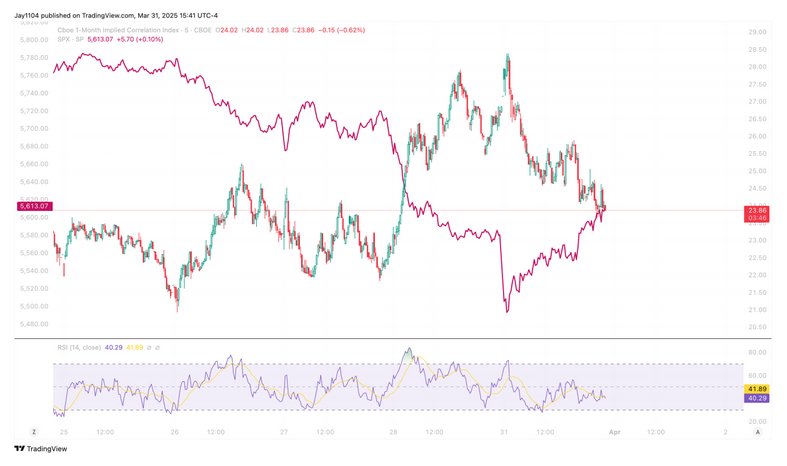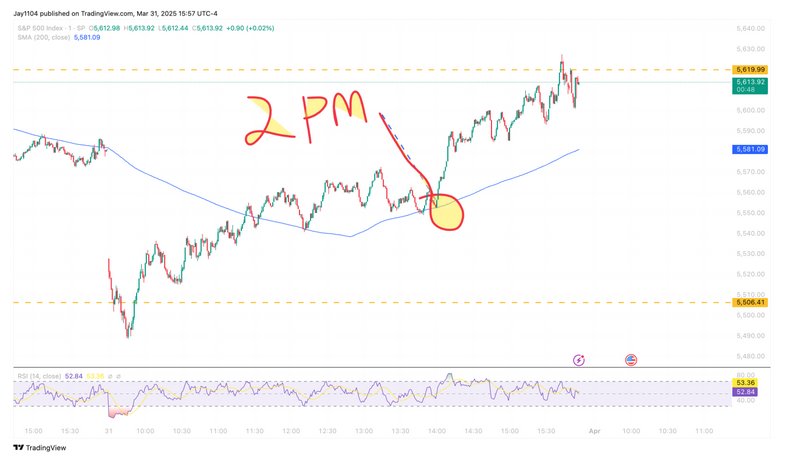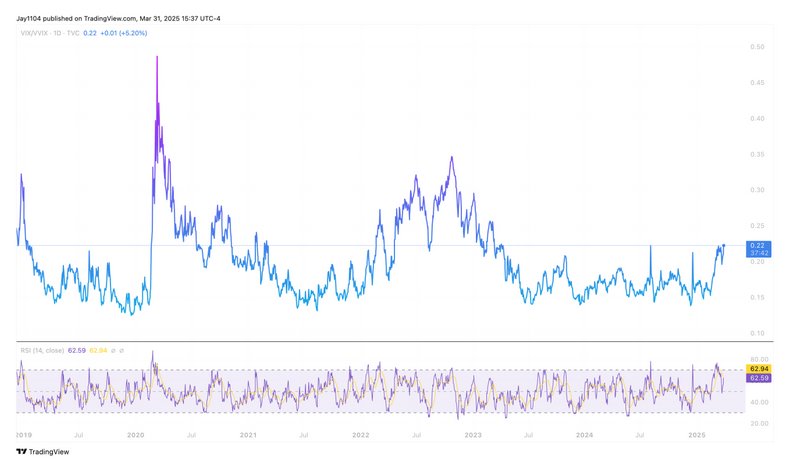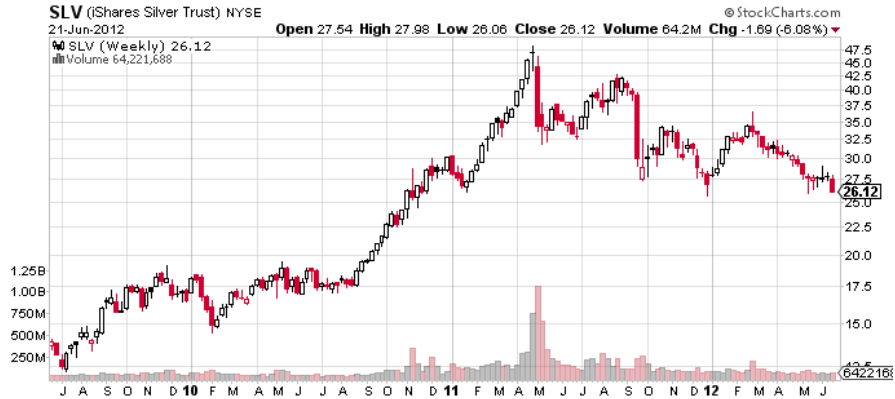By: Michael Kramer
It was strange, with stocks gapping lower and grinding higher all day. It was hard to say precisely what the driver was, but by day’s end, I can take an educated guess and run down what I think may have happened.
The signs that something was weird about today’s trading session started early. The 1-month implied correlation index started to go down, which isn’t supposed to happen when stocks fall. The 1-month implied correlation should be falling when the S&P 500 is rising, not falling when the S&P 500 is falling. It was the first sign of the day that the move lower wasn’t meant to last.
Additionally, the put wall today was at 5,500; when the index hit 5,490 today, there was no place for it to go. My guess is that puts started to get closed out, driving implied volatility lower. Then, to make matters worse, 0 DTE traders got trapped and their puts were closed out too. Plus, the fact that the JPM Collar was being rolled out probably created other background noise.

As we have discussed many times, market-on-close imbalances begin to build around 2 PM ET, with the final tally released at 3:50 PM. Today, being quarter end, it is not surprising that there was nearly $7 billion to buy on the closing cross, which is a massive sum.

Based on my mild observation in the social media realm, I can only imagine that many investors think today marks some capitulatory moment. If it was, it didn’t have that feel to me, at least the classic markers of such were absent.
The VIX spiking to 24.8 didn’t scream of fear, and the VIX to VVIX ratio at 0.22 didn’t look scary.

No one will know for sure, but I could imagine that if the end-of-quarter activity drove today’s gains, the rally likely won’t last and, more importantly, could be given back pretty fast.
Originally posted on March 31, 2025 on Mott Capital blog
PHOTO CREDIT: https://www.shutterstock.com/g/M-SUR
VIA SHUTTERSTOCK
FOOTNOTES AND SOURCES:
Terms by ChatGPT
1. Gapping Lower
Definition: A sharp drop in a stock or index price at the open, creating a “gap” from the previous day’s close. This often signals a strong shift in sentiment or response to news.
2. Implied Correlation Index (1-Month)
Definition: A derivative-based index measuring the expected average correlation of S&P 500 constituents over the next month. Lower values suggest more stock-specific (idiosyncratic) moves, while higher values imply more systemic (market-wide) behavior.
3. S&P 500
Definition: A market-capitalization-weighted index of 500 of the largest U.S. publicly traded companies, considered a benchmark for overall U.S. equity performance.
4. Put Wall
Definition: A price level with a significant concentration of put open interest, acting as a potential support level. Large put positions can influence price behavior due to hedging flows from options dealers.
5. Implied Volatility (IV)
Definition: The market’s forecast of a likely movement in a security’s price, derived from options pricing. Falling IV often accompanies unwinding of protective positions or reduced market uncertainty.
6. 0 DTE Traders
Definition: Market participants trading options with zero days to expiration. Their activity can cause sharp intraday moves, especially near key index levels, due to gamma exposure and rapid position adjustments.
7. JPM Collar
Definition: A well-known structured option position by J.P. Morgan’s Hedged Equity Fund, typically involving a protective put and a short call against S&P 500 exposure. Rolling this position can influence volatility and dealer flows around quarter-end.
8. Market-on-Close (MOC) Imbalances
Definition: Orders placed to execute at the market close, which can skew price action in the final minutes. Imbalances reflect institutional flows and are particularly significant during index rebalancing or quarter-end.
9. Closing Cross
Definition: The mechanism used to determine the closing price on an exchange. It matches buy and sell MOC orders to execute at a single price point.
10. VIX
Definition: The CBOE Volatility Index, measuring the market’s 30-day expected volatility based on S&P 500 options. Often dubbed the “fear gauge.”
11. VVIX
Definition: The volatility of the VIX itself—i.e., expected volatility of volatility. Used to gauge uncertainty or stress within the volatility market.
12. VIX to VVIX Ratio
Definition: A relative measure used by some traders to assess the stability of volatility expectations. A low ratio may imply complacency or a lack of panic despite a high VIX.
13. Capitulation
Definition: A market event where investors give up on holding positions, typically during sharp declines, leading to a surge in selling volume. It’s often seen as a bottoming signal.
DISCLOSURES:
This report contains independent commentary to be used for informational and educational purposes only. Michael Kramer is a member and investment adviser representative with Mott Capital Management. Mr. Kramer is not affiliated with this company and does not serve on the board of any related company that issued this stock. All opinions and analyses presented by Michael Kramer in this analysis or market report are solely Michael Kramer’s views. Readers should not treat any opinion, viewpoint, or prediction expressed by Michael Kramer as a specific solicitation or recommendation to buy or sell a particular security or follow a particular strategy. Michael Kramer’s analyses are based upon information and independent research that he considers reliable, but neither Michael Kramer nor Mott Capital Management guarantees its completeness or accuracy, and it should not be relied upon as such. Michael Kramer is not under any obligation to update or correct any information presented in his analyses. Mr. Kramer’s statements, guidance, and opinions are subject to change without notice. Past performance is not indicative of future results. Neither Michael Kramer nor Mott Capital Management guarantees any specific outcome or profit. You should be aware of the real risk of loss in following any strategy or investment commentary presented in this analysis. Strategies or investments discussed may fluctuate in price or value. Investments or strategies mentioned in this analysis may not be suitable for you. This material does not consider your particular investment objectives, financial situation, or needs and is not intended as a recommendation appropriate for you. You must make an independent decision regarding investments or strategies in this analysis. Upon request, the advisor will provide a list of all recommendations made during the past twelve months. Before acting on information in this analysis, you should consider whether it is suitable for your circumstances and strongly consider seeking advice from your own financial or investment adviser to determine the suitability of any investment.



